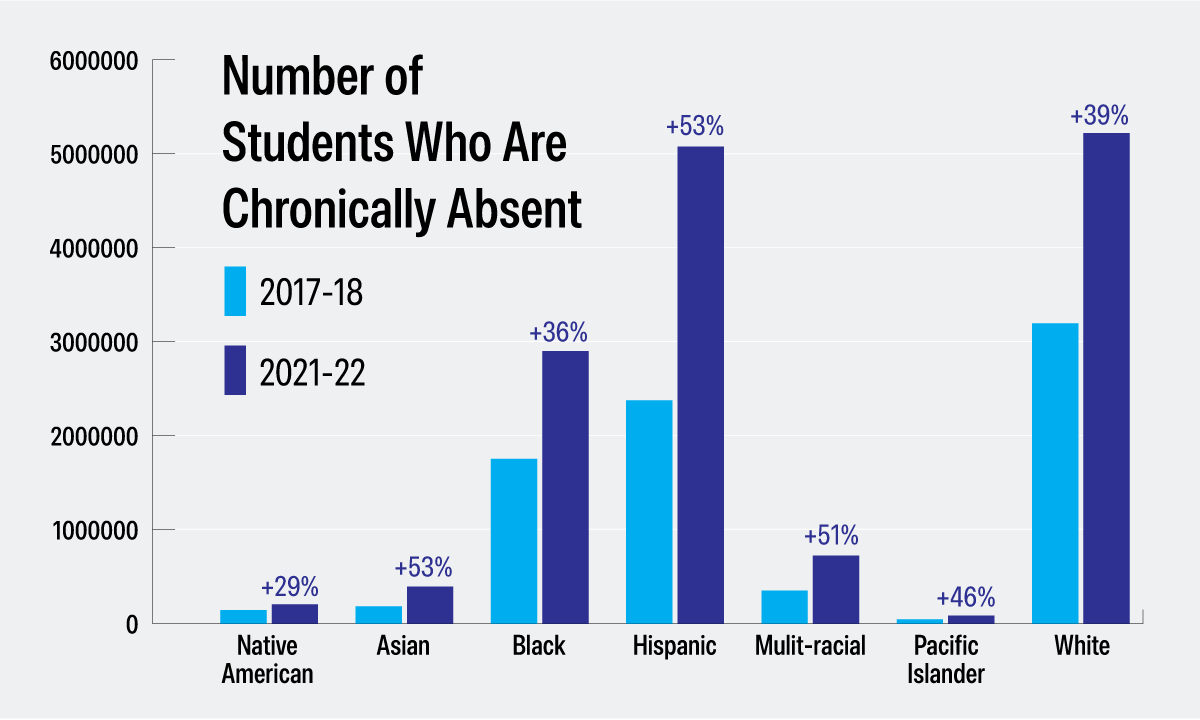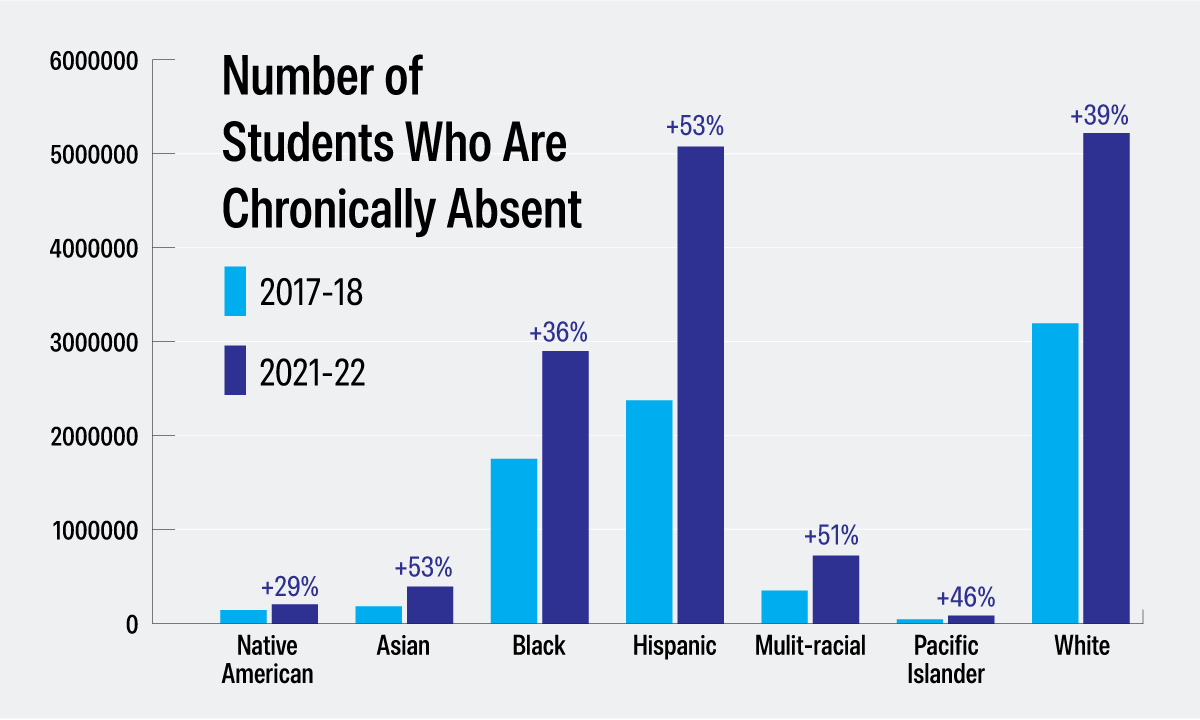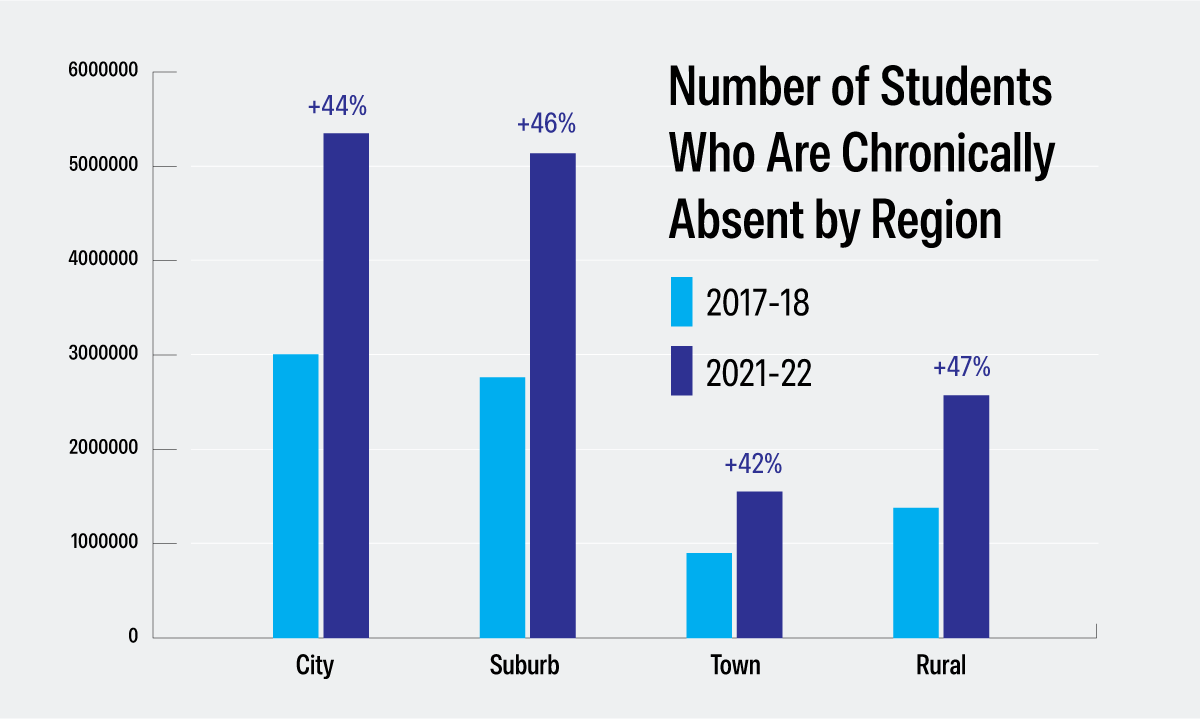Empty Desks: New Absenteeism Report Shows Dramatic Surge in Suburban, Rural & Latino Students Missing Class
An analysis finds more than 14 million chronically absent students during the 2021 academic year — an increase of nearly 7 million students vs. 2017.

Get stories like these delivered straight to your inbox. Sign up for The 74 Newsletter
A new demographic analysis of chronic absenteeism shows absences have increased for all students — with a dramatic uptick for Latino students and in suburban and rural school districts.
The analysis, from Attendance Works and the Everyone Graduates Center at Johns Hopkins University, looked at federal data that found more than 14 million chronically absent students during the 2021-22 academic year — an increase of nearly seven million students compared to 2017-18.
Robert Balfanz, director of the Everyone Graduates Center, said an “all hands on deck” approach is needed to address widespread absenteeism in the aftermath of the pandemic.
“If you can imagine a rising tide, students who were a little underwater are now underwater more and those that weren’t underwater before now are,” Balfanz told The 74.
This analysis served as a second look into the attendance trend which previously showed how two out of three students across the country were enrolled in schools with high or extreme chronic absenteeism — more than twice the rate compared to the 2017-18 academic year.
Students are considered chronically absent if they miss at least 10% of the school year, or roughly 18 days.

Although the attendance trend affected students of all ethnic backgrounds, Latino students took the brunt of the declines — increasing from nearly 2.4 million in 2017-18 to five million in 2021-22, a 53 percent jump.
Pacific Islander students saw the second biggest jump of 46 percent, white students by 39 percent, Black students by 36 percent and Native American students by 29 percent.
Balfanz said pandemic-era challenges for low-income and immigrant families pulled students away from school and contributed to the widening attendance gaps.
“Many kids got jobs because their parents lost theirs and became a lot more restricted,” Balfanz said, adding how Latino students often faced this burden compared to other ethnic groups.
He added how “caregiving” also played a major factor in declining Latino student attendance — often coming from multigenerational families with stronger cultural expectations to look after younger siblings.

The attendance trend was also observed geographically, particularly impacting students in both suburban and rural areas.
Chronic absenteeism in suburban and rural school districts jumped to 5.1 million and 2.5 million students respectively in 2021-22 — a 46 percent and 47 percent increase compared to 2.8 million and 1.4 million in 2017-18.
Schools in cities experienced an increase of 44 percent and districts in towns jumped by 42 percent.
Hedy Chang, founder and executive director of Attendance Works, said “inequitable access to needed [healthcare] services and poor transportation” during the pandemic contributed to the attendance gaps in rural areas.
The greatest increases in chronic absenteeism occurred among schools serving larger numbers of students living in poverty, the analysis found.
Among schools with 75 percent or more students receiving free or reduced-price lunch, chronic absence nearly tripled — from 25 percent to 69 percent.
Chang said poverty was the driving force behind student chronic absenteeism nationwide.
“Kids who are living in poverty are much more likely to have all of these barriers when it comes to aversion and disengagement,” Chang told The 74.
“It’s hard for students to keep going when they feel like nobody knows them or nobody cares,” Balfanz added. “Solving that disconnect they have is a great first step.”
Get stories like these delivered straight to your inbox. Sign up for The 74 Newsletter


